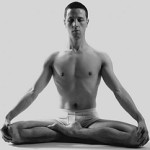The practice of Vajroli mudra is simple yet effective and can be used as an additional technique to many other poses and practices to enhance them. For example, you can […]

In Sanskrit ‘Mudra’ means ‘seal’, ‘attitude’ or ‘gesture’. In yoga Mudras are used to connect the individual pranic force with the Universal force.
Many yogic texts, such as Hatha Yoga Pradipika, describe Mudras as a part of yoga system (yoganga), a branch of advanced practices that require deeper awareness. That is why one is introduced to the Mudras only after attaining some substantial progress in Asana, Pranayama and Bandha, which means, one can practice Mudra only when their gross bodily and mental blockages have been removed with the help of yoga poses, control of breathing, etc.
Mudras act on a subtle level, and represent subtle physical movements that can alter our mood, perception, attitude, and improve concentration. Sometimes Mudra is just a hand gesture; sometimes it involves the whole body like in Viparita Karani Mudra, where we have Asana, Pranayama, and even Bandha in some cases (Mula Bandha, for example, which can be done in the final position of Viparita Karani).
Mudras can help awaken Pranas, Chakras and Kundalini, grant some mystic powers called Siddhi, but due to their subtle nature, they used to be taught by a Guru only.
Mudras help access subconscious reflexes, instinctive habit patterns, establish subtle connection with the primitive areas of the brain to allow the influence on the subconscious level (to change habits, for example, or to overcome some mental attachments, etc).
Usually Mudras are combined with yoga poses and breathing exercises or performed after them.

The practice of Vajroli mudra is simple yet effective and can be used as an additional technique to many other poses and practices to enhance them. For example, you can […]

Ashwini Mudra Meaning Before we talk about the ashwini mudra practice, lets define its meaning. Ashwa means “horse” in Sanskrit, and mudra is a “gesture” or “sign” but this doesn’t say […]